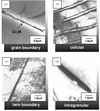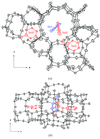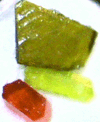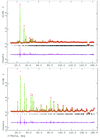issue contents
April 2005 issue

Cover illustration: The arrangements of boxes shown represent the possible packing patterns of four molecules (each with dimensions L, M and S) in a unit cell, as described by the Box Model of crystal packing [Pidcock & Motherwell (2004). Cryst. Growth Des., 4, 611-620]. Application of this model to experimental P21/c structures revealed that the lower surface area packing patterns, for example 221L and 221M, are populated to a much greater extent than the higher surface area packing patterns of 114M and 114L. This finding indicates molecular shape is of primary importance in crystal packing [Pidcock & Motherwell (2004), Acta Cryst. B60, 539-546; Pidcock & Motherwell (2004), Acta Cryst. B60, 725-733].
research papers








 access
access







The structure of hexamethylbenzene below the first-order phase transition at 117 K has been obtained using neutron powder diffraction, over 70 years after the first report of the room-temperature X-ray crystal structure of this ubiquitous laboratory chemical. The low-temperature structure may be considered as a high-density modification of the room-temperature structure, resulting from decreased thermally induced disorder.






 access
access

 journal menu
journal menu





























